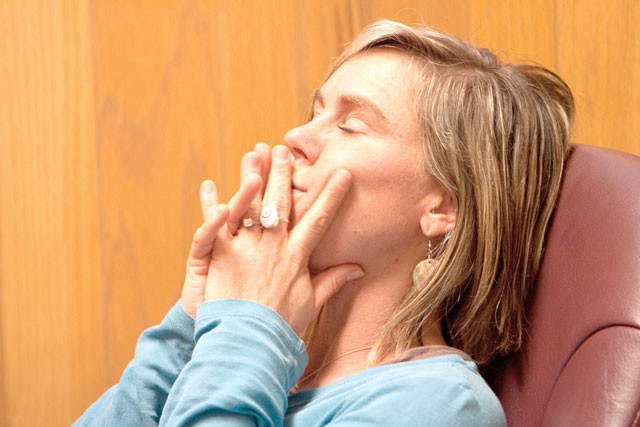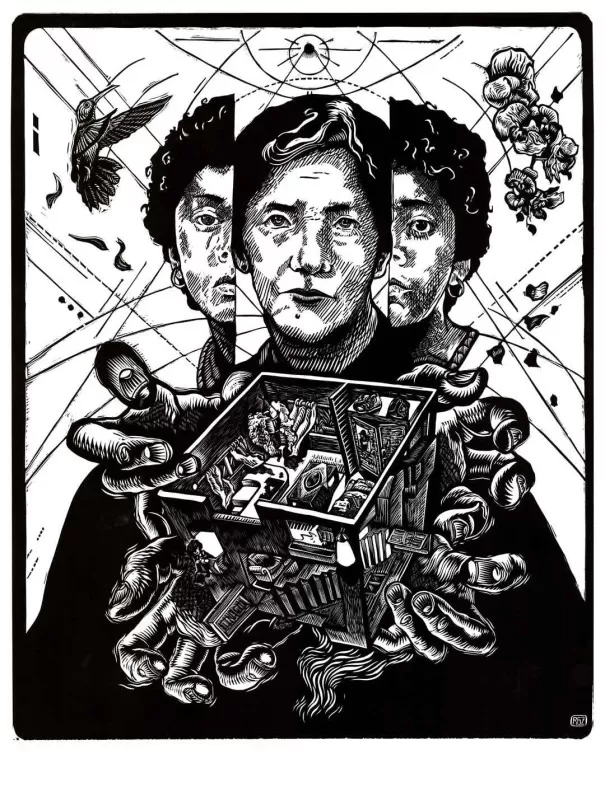
Even before the accident, Katie Deck, a 31-year-old mother of two, knew addiction all too well. It was her addiction to alcohol that led to a DUI. And that DUI was a wakeup call that made her decide to quit drinking once and for all.
But a mere week later — a week sober — she fell while skateboarding, tearing her ACL and meniscus. When the hospital discharged her, they prescribed her Oxycontin.
And with that, with a single dose, she knew she was addicted. She had swapped her alcoholism for a quieter, subtler form of addiction — the addiction to pills.
“I would just wake up in the morning, I had to have them,” Deck says. “I’d be shaky and hot and feeling like I wanted to get out of my skin, feeling sick — just kind of nauseous — if I didn’t have them.”
At Spokane’s Lakeside Recovery Center, Deck’s story is a common one.
“Across the board in the last three years, there’s been an extreme surge in prescription abuse,” chemical dependency counselor Jerry Fougere says. Besides alcohol, it’s one of the most common addictions he sees.
For women and mothers like Deck, pain relievers can be particularly attractive.
“Women still are the nucleus of the family. They’re still the ones who have to clean, take care of the children and still do their job eight hours a day,” says Roberta Coult, clinical director at the Lakeside Recovery Center in North Spokane. “If they do become ill, they’re going to start taking the medication so they can get back on their feet to start providing again.”
And prescription drug abusers don’t have the scent of an alcoholic or the physical deterioration of meth addict. For a time, the mother can live her life as essentially normal, with husband and kids none the wiser.
Until, as it did for Deck, it spirals out of control.
According to the National Institute of Drug Abuse, women are more likely to be prescribed addictive prescription drugs than men — in some cases, 55 percent more likely. They’re also at “increased risk for nonmedical use of narcotic analgesics and tranquilizers (e.g., benzodiazepines).” Last year, more than 3.7 million women took prescription drugs nonmedically.
But even that data may be skewed. Women often never report their addiction.
“Keep in mind, the male-to-female ratio in treatment is usually around 10 to 1. Women traditionally don’t seek treatment. That is a major barrier to addressing this problem,” Fougere says. “I believe the rate of addiction is as high amongst females as males, but more males end up in the treatment center.”
There’s a stigma — Fougere says — even more so than for men, against women who become addicted to drugs or alcohol.“Nobody wants to admit that they’re an addict or an alcoholic. You have this reputation to uphold as this responsible mother and woman,” Deck says.
Coult blames the acceleration of prescription drug abuse on the acceleration of prescriptions. “There’s more of a tendency to prescribe these extremely addictive pain medications so they can send them home early,” Coult says.
And while the pain medication is tightly scrutinized at the hospital, at home the only thing standing between the patient and their medication is willpower and a childproof cap.
“They can use it at will, they can use as much as they want to,” Fougere says. “Most of my patients, both male and female, will say [their addiction] began after a surgery.”
Deck says her bottle of Oxycontin had 100 pills in it. Her doctor recommended taking two or three a day. She took three or four times that.
“I think that physicians should maybe be a little bit more aware of a person’s background,” Deck says. “Do you come from an addictive background? Are your family members addicts?”
To be clear, Deck doesn’t blame her doctor. Her doctor got increasingly suspicious with the amount of Oxycontin she was requesting and cut her off. Then Deck became addicted to Xanax to help with the withdrawals. Finally she checked herself into an inpatient treatment center. She confessed her problem to her daughter, her fiancé and her parents.
“My 14-year-old, I really sat down with her and told her everything. And she’s very grateful,” Deck recalls. “She knew something was going on with Mom.”
Today — a year and a half clean — she’s working behind the front desk at the Lakeside Recovery Center, assisting others to get over their addictions.
The key, as always, is being brave enough to admit that you have a problem, Deck says. Find somebody stable, somebody sober, somebody you can trust. “You just seek help,” she says.
THREE MOST COMMONLY ABUSED PRESCRIPTION MEDS
Opioids: To treat pain (morphine and codeine including Kadian, Avinza, Oxycontin, Percodan, Percoset)
Depressants: To treat anxiety and sleep disorders (barbiturate and benzodiazepine including Valium, Librium, Xanax, Halcion, ProSom)
Stimulants: For ADHD and the sleep disorder narcolepsy (dextroamphetamine and methylphenidate including Dexedrine, Adderall, Ritalin, Concerta)
SOURCE: National Institute on Drug Abuse




















